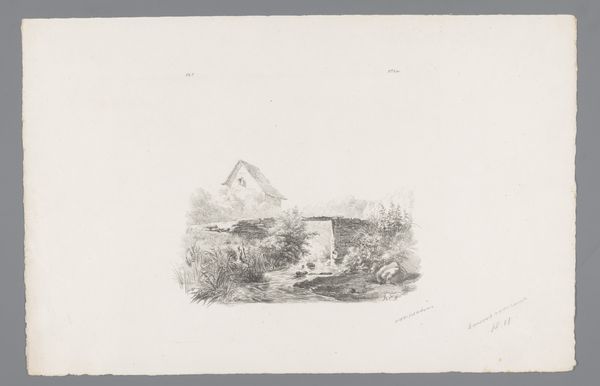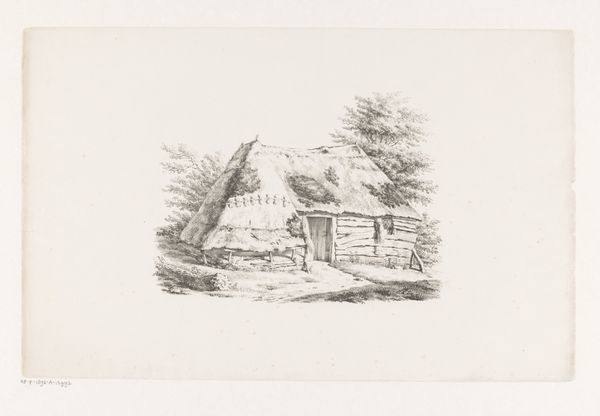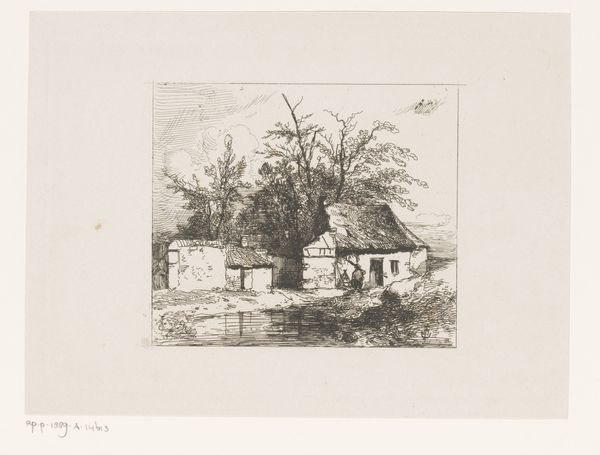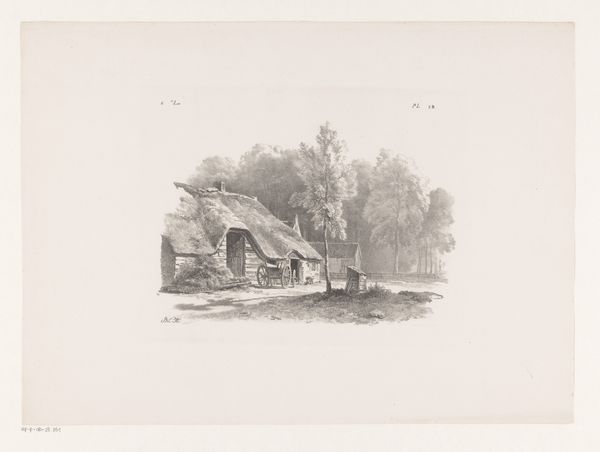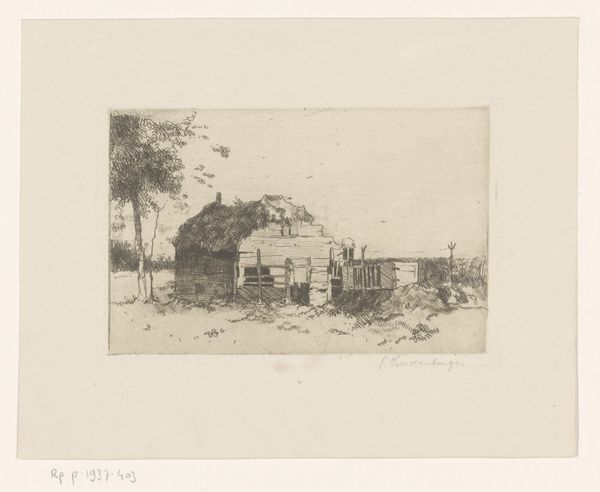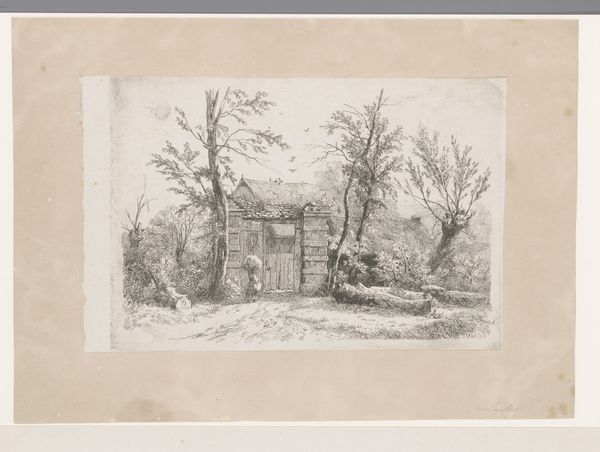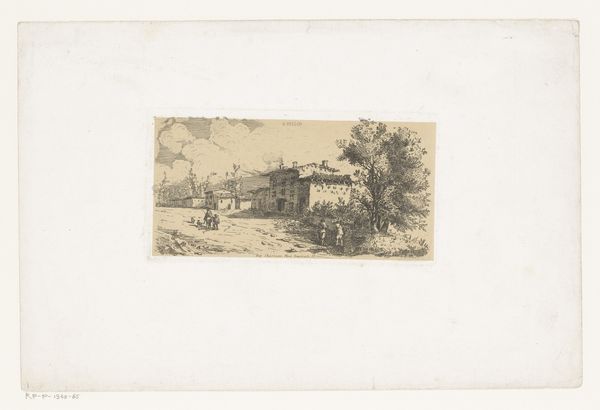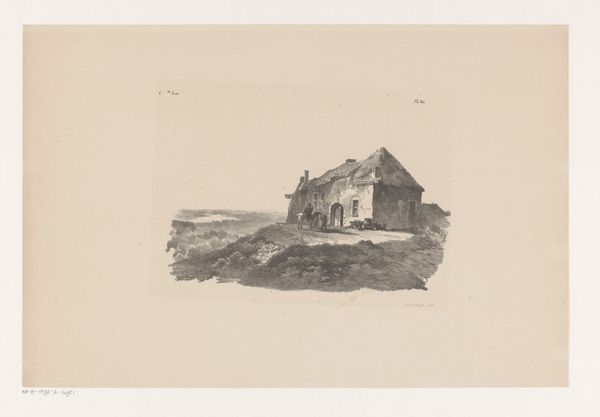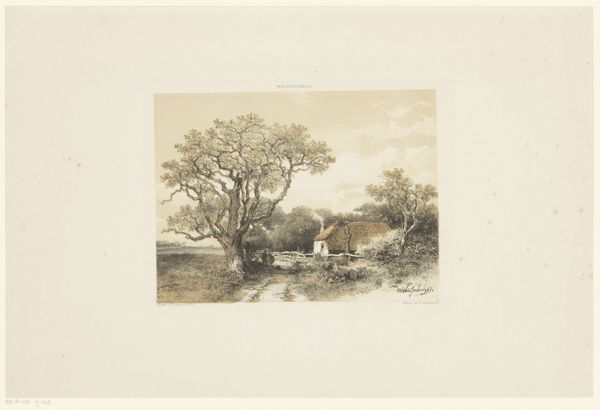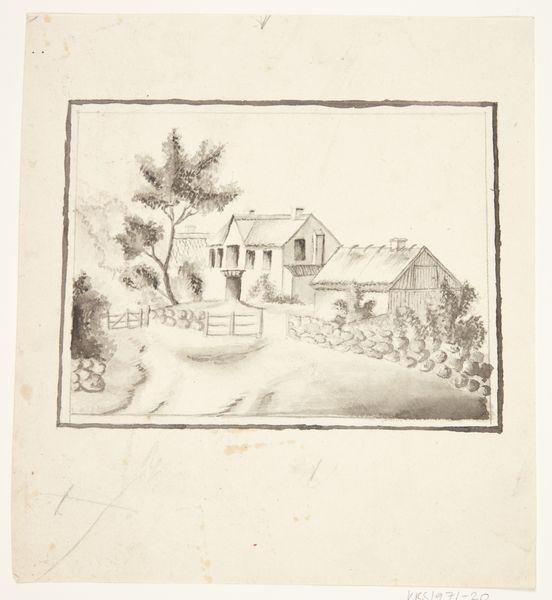
drawing, paper, ink, pencil
#
drawing
#
landscape
#
paper
#
ink
#
romanticism
#
pencil
#
genre-painting
Dimensions: height 210 mm, width 250 mm
Copyright: Rijks Museum: Open Domain
Curator: This little gem is titled "Hekwerk, ton en opslagruimten," which translates to "Fence, barrel, and storage areas." It's a drawing by Cornelis de Kruyff, likely created sometime between 1809 and 1854. Notice the delicate use of pencil and ink on paper. Editor: My first thought? It whispers secrets of a quieter, simpler life. It’s a bit melancholic, maybe a touch romantic, but definitely evocative of simpler times. Curator: It’s funny you say romantic. While its unassuming subject matter feels almost like genre painting, it does indeed fall into the Romanticism style. It captures the artist’s emotional reaction to the world and it really leans into capturing a moment. You could just happen upon it, which also tells us the beauty does indeed exist in simplicity. Editor: Absolutely! And it’s the humble subjects that make it speak volumes. That ramshackle little structure, that fence, that weathered barrel… they’re not just objects; they’re relics imbued with memory, history, stories that could have been in it. The round barrel particularly captures our eye – it can evoke cycles and beginnings, while the enclosure symbolizes containment or protection. What was in it? I mean it speaks to the cycles of rural existence. Curator: Good point. I also like how the light plays across these ordinary objects. It gives the entire composition a certain dynamism. Like they exist just outside of our periphery, almost as a mirage. But at the same time the clarity almost provides a window into someone else's memory of life. It also invites me to consider where our society placed beauty; especially that these items could evoke the same aesthetic emotions we find in sweeping nature pictures. Editor: True. And for me, the enduring appeal lies in that contrast – between the seemingly mundane objects and the artist's almost reverential depiction of them. This drawing transforms the forgotten and ordinary into something worthy of contemplation. We discover how meaning persists through visuals, quietly influencing how we engage with history. Curator: Right. The picture almost presents itself as the feeling, or spirit of that area of the world. The romance is embedded. Editor: Well said. I’m not sure what they held but it makes me wish I was there to ask.
Comments
No comments
Be the first to comment and join the conversation on the ultimate creative platform.


